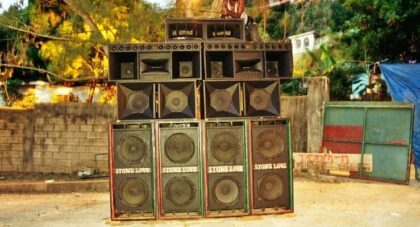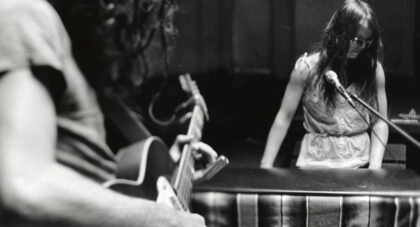Michael Rault's new album, New Day Tonight, lends itself to repeated listens. It's not just that the Canadian musician continues to build on his distinctively retro-but-not-old sound, but the complexity and layering accomplished on the LP reveals something new with each listen. We caught up with Rault from his home in Montreal and got the lowdown on working hand-in-hand with Daptone and Wick Records, the long-but-fruitful gap between releases, and the fortuitous walk he took with producer Wayne Gordon to a Brooklyn music shop that ended up giving the record one of its signature sounds.
It's a New Day Tonight by Michael Rault
Aquarium Drunkard: Not to start too on-the-nose, but at times the record seems preoccupied with the dichotomy of night and day, and sleep in particular. Both in the title, some of the song titles, and the lyrics — and it’s even coming out on Sleepless Records in Canada… so to be frank, how do you sleep at night?
Michael Rault: Nothing particularly unusual happens to me when I sleep, I used to sleepwalk sometimes, I guess that’s unusual, but I don’t do that much anymore. I’ve always had this subconscious approach to writing music and writing songs — not to sound pretentious or like I’ve got any special method that I use, cause I don’t really. I tend to try to play things and come up with ideas and see what sticks without thinking about it too much. And then listening to what I sing, when I’m not really thinking about it, I start to see patterns and themes. Then I start to think more consciously and make sense of it without, maybe, making too much sense of it. I don’t want to kill it by organizing it too much.
I wrote “Sleep With Me” without really thinking about it at all. And it came together in a more cohesive way than most songs do. I think I sang the first verse and chorus and maybe second verse in pretty quick order. I didn’t think I was gonna make an album themed around sleeping, but the idea kept popping up in songs I was writing. As I started getting closer to finishing the album, I was coming up with a list of songs to concentrate on - I realized that sleep was a theme. I wrote a couple of more, consciously, about sleeping and dreaming to fill out the album. “Dream Song” was consciously written about it.
Only the good shit. Aquarium Drunkard is powered by its patrons. Keep the servers humming and help us continue doing it by pledging your support.
To continue reading, become a member or log in.


